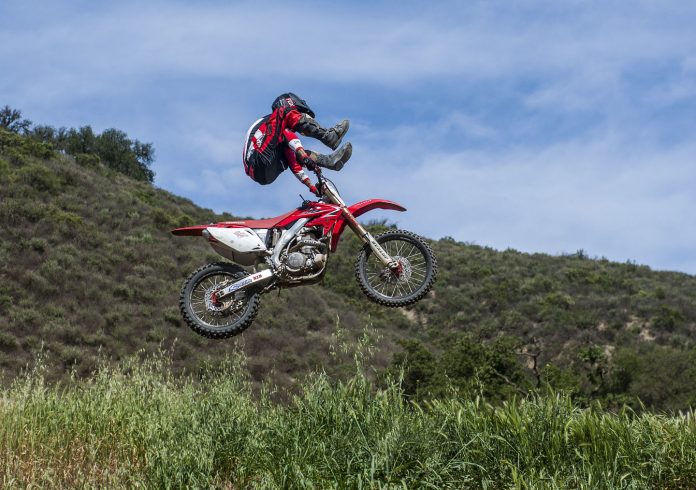Though a Gilroy biker died in the Hollister Hills State Vehicular Recreation Area last week after hitting a tree, the tragedy didn’t stop more than a dozen adrenaline junkies of all ages from hitting the trails last Friday.
While deaths are “rare,” said Hollister Hills Recreation Area Superintendent Matthew Allen, injuries are part of the sport.
That is evident from the hospital’s emergency room.
“We probably see a couple (Hollister Hills bikers) every weekend on average throughout the year,” said Rebecca Jones, the director of the emergency department for Hazel Hawkins Memorial Hospital. More than 90 percent of the injuries are damaged bones including arms, femurs, the lower leg tibia and collarbones, she said. Then, there are many dislocated shoulders.
Biker George Meyers, 38, from Brentwood, took his two children Ivy, 9, and Austin, 7, to Hollister Hills to ride their motorcycles Friday but he also taught them how to stay safe.
“Every time these guys ride, they wear–obviously—boots, knee guards, chest protector and goggles,” he said.
At this recreation area, Meyers likes that many of the paths are one way and the corners are covered with hay bales instead of just wood and wire. The one-directional trails reduce the risk of a head-on collision while the hay can cushion a hard fall.
For Los Gatos biker Blaine Sollazzi, 40, safety isn’t just about protective riding gear. Sollazzi also brings his cell phone.
Is the sport risky?
“It’s not ping pong,” he said, adding that there’s a chance he could have died while driving his truck to the recreation area.
Sollazzi knew Doug Williams, the 23-year-old Gilroy man who reportedly hit a tree just days before this visit to Hollister Hills. The bikers met when Williams lent Sollazzi a tool.
“I’ve ridden with him before,” Sollazzi said. “He was a great kid. He was very nice.”
Sollazzi has been coming to this recreation area since he was eight years old and acknowledged it’s best to go in a group. Sometimes that isn’t possible.
“It’s safer to ride with someone but you can’t always do that and you can’t stay home,” he said.
Bikers Austin Ceja and Nick Feliciano from Monterey, who were also sitting on picnic benches overlooking Hollister Hills trails Friday afternoon, felt more strongly about the importance of never riding alone, especially as they considered Williams’ disappearance earlier in the week.
“Do not go alone,” said Feliciano, 21.
“Yeah, you can’t ride alone out here,” said Ceja, 28.
“If someone had been with him, he’d be found,” Feliciano added.
Those who insist on riding alone should stick to the main trails and ride on the weekends instead of late in the evening on a workday, the bikers said. When more people are at the site, there’s a better chance someone will see a biker if they fall, the friends said.
Traumatic head injuries are not treated locally, said Jones, the E.R. director. The most severe cases go to Hazel Hawkins only if the patient needs resuscitation, she said. Otherwise, patients with serious head injuries are flown to trauma centers, including the Natividad Medical Center in Monterey and the Regional Medical Center of San Jose.
The emergency department director doesn’t remember a Hollister Hills-related fatality. She does know that patients of all kinds who arrive at the emergency room don’t always have insurance.
“It’s not uncommon for people to not have insurance,” said the director. “And that’s unfortunate because a lot of these people are out of county.”
In the last six months, the emergency room has seen a 15 percent to 20 percent increase in patients because the Obamacare reimbursement to doctors has not been “adequate to cover expenses” and primary physicians are opting out of accepting people with these plans, Jones said. As Obamacare users are turned away by primary physicians, they’re heading to the emergency room for care, she said.
Longtime friends Ceja and Feliciano don’t keep extra insurance because they ride bikes. Ceja doesn’t keep insurance at all.
“If you’re like me, you ride without insurance because Obamacare doesn’t do anything,” he said.
Still, Ceja admits it’s not “smart,” since a certain amount of tumbles are inevitable with the sport. Ceja keeps coming back to biking for the “stress release,” he said.
“You’re free,” said the biker. “You’re away from everything.”










